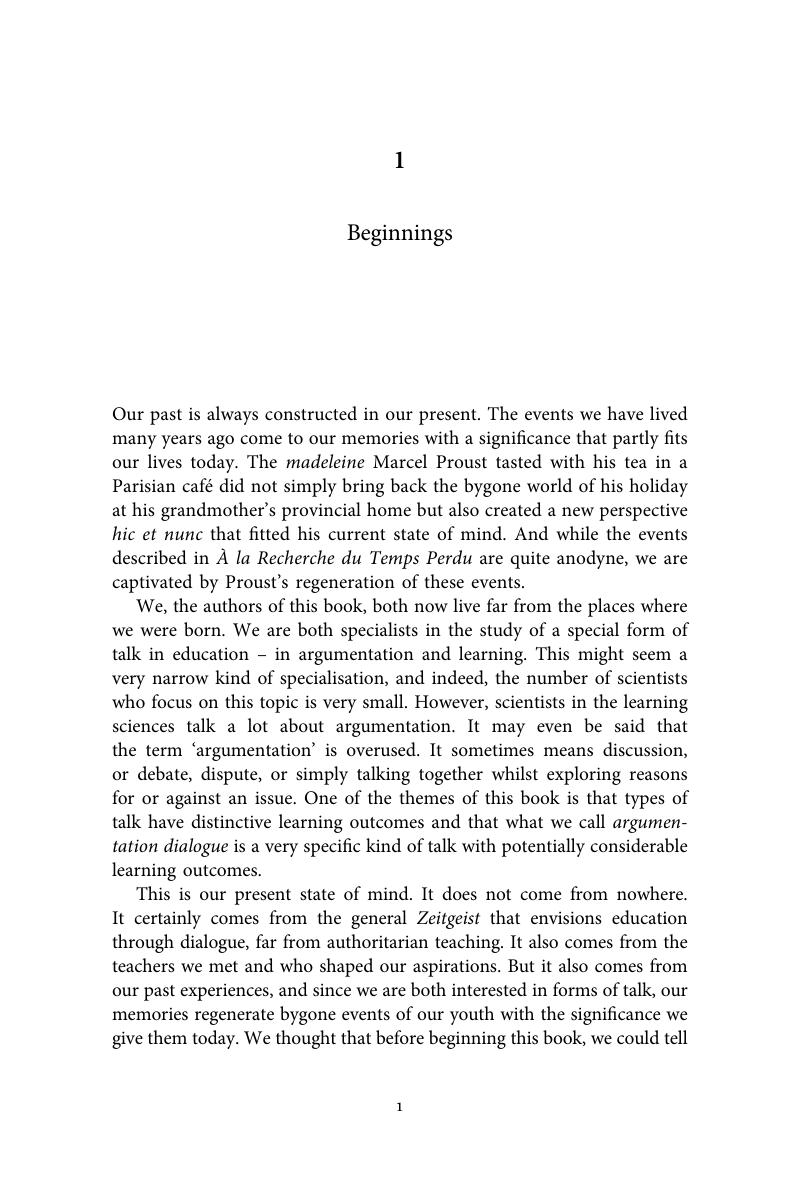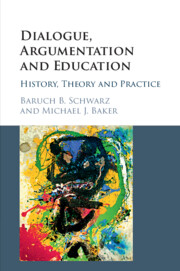Book contents
- Dialogue, Argumentation and Education
- Dialogue, Argumentation and Education
- Copyright page
- Dedication
- Contents
- Tables and Figures
- Foreword
- Preface
- Acknowledgements
- 1 Beginnings
- 2 Changes in the Role of Talk in Education: Philosophical and Ideological Revolutions
- 3 Argumentation Theory for Education
- 4 The Pervasive Role of Argumentation According to Progressive Pedagogies
- 5 Argumentative Interactions in the Classroom
- 6 Argumentative Design
- 7 Conclusions
- References
- Index of Names
- Subject Index
1 - Beginnings
Published online by Cambridge University Press: 21 January 2017
- Dialogue, Argumentation and Education
- Dialogue, Argumentation and Education
- Copyright page
- Dedication
- Contents
- Tables and Figures
- Foreword
- Preface
- Acknowledgements
- 1 Beginnings
- 2 Changes in the Role of Talk in Education: Philosophical and Ideological Revolutions
- 3 Argumentation Theory for Education
- 4 The Pervasive Role of Argumentation According to Progressive Pedagogies
- 5 Argumentative Interactions in the Classroom
- 6 Argumentative Design
- 7 Conclusions
- References
- Index of Names
- Subject Index
Summary

Information
- Type
- Chapter
- Information
- Dialogue, Argumentation and EducationHistory, Theory and Practice, pp. 1 - 23Publisher: Cambridge University PressPrint publication year: 2016
